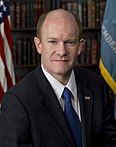Class 1 Class 1 U.S. senators belong to the electoral cycle that were elected for only one Congress in the first elections of 1788, and the seat was contested again for the 2nd, 5th, and every three Congresses (six years) thereafter. The seat in recent years has been contested in 2000, 2006, 2012, and 2018. The next election will be in 2024. | C
o
n
g
r
e
s
s | Class 2 Class 2 U.S. senators belong to the electoral cycle that were elected for the first two United States Congresses in the first elections of 1788, and the seat was next contested again for the 3rd, 6th, and every three Congresses (six years) thereafter. The seat in recent years has been contested in 2002, 2008, and 2014, with a special election in 2010. The next election will be in 2020. |
|---|
| # | Senator | Party | Years in office | Electoral history | T
e
r
m | T
e
r
m | Electoral history | Years in office | Party | Senator | # |
|---|
| 1 | 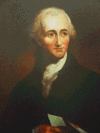
George Read | Pro-
Admin. | March 4, 1789 –
September 18, 1793 | Elected in 1788. | 1 | 1st | 1 | Elected in 1788. | March 4, 1789 –
March 3, 1793 | Anti-
Admin. | 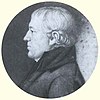
Richard Bassett | 1 |
|---|
Re-elected October 23, 1790.
Resigned to become Chief Justice of Delaware. | 2 | 2nd | Pro-
Admin. |
| 3rd | 2 | Elected in 1793.
Resigned. | March 4, 1793 –
January 19, 1798 | Pro-Admin. | 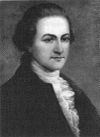
John M. Vining | 2 |
|---|
| Vacant | September 18, 1793 –
February 7, 1795 | |
| 2 | 
Henry Latimer | Pro-
Admin. | February 7, 1795 –
February 28, 1801 | Elected in 1795 to finish Read's term. |
|---|
| Federalist | 4th |
Re-elected January 6, 1797.
Resigned. | 3 | 5th |
Elected in 1798 to finish Vining's term.
Died. | January 19, 1798 –
August 11, 1798 | Federalist | 
Joshua Clayton | 3 |
|---|
| | August 11, 1798 –
January 17, 1799 | Vacant |
| Elected in 1799 to finish Clayton's term. | January 17, 1799 –
November 6, 1804 | Federalist | 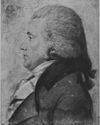
William H. Wells | 4 |
|---|
| 6th | 3 | Re-elected in 1799.
Resigned. |
| 3 | 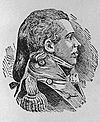
Samuel White | Federalist | February 28, 1801 –
November 4, 1809 | Appointed to finish Latimer's term. |
|---|
| 7th |
| Re-elected January 11, 1803. [1] | 4 | 8th |
| | November 6, 1804 –
November 13, 1804 | Vacant |
| Elected in 1804 to finish Wells's term. | November 13, 1804 –
March 3, 1813 | Federalist | 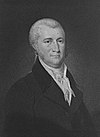
James A. Bayard | 5 |
|---|
| 9th | 4 | Re-elected in 1805. |
| 10th |
| Re-elected January 11, 1809. [2] Died. | 5 | 11th |
| Vacant | November 4, 1809 –
January 12, 1810 | |
| 4 | Outerbridge Horsey | Federalist | January 12, 1810 –
March 3, 1821 | Elected in 1810 to finish White's term. |
|---|
| 12th | 5 | Re-elected in 1811.
Resigned. |
| 13th | | March 3, 1813 –
May 21, 1813 | Vacant |
Elected in 1813 to finish Bayard's term.
Retired. | May 21, 1813 –
March 3, 1817 | Federalist | 
William H. Wells | 6 |
|---|
Re-elected January 13, 1815. [3]
Retired. | 6 | 14th |
| 15th | 6 | Elected in 1817.
Legislature failed to elect. | March 4, 1817 –
March 3, 1823 | Federalist | 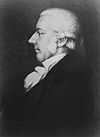
Nicholas Van Dyke | 7 |
|---|
| 16th |
| Vacant | March 4, 1821 –
January 23, 1822 | | 7 | 17th |
| 5 | 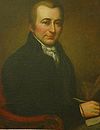
Caesar A. Rodney | Democratic-
Republican | January 24, 1822 –
January 29, 1823 | Elected late to finish vacant term.
Resigned to become U.S. Minister Plenipotentiary to the United Provinces of the River Plate. |
|---|
| Vacant | January 29, 1823 –
January 8, 1824 | |
| 18th | 7 | | March 4, 1823 –
January 7, 1824 | Vacant |
Re-elected late.
Died. | January 7, 1824 –
May 21, 1826 | Adams-Clay Federalist | 
Nicholas Van Dyke |
| 6 | 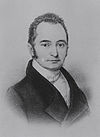
Thomas Clayton | Adams-Clay Federalist | January 8, 1824 –
March 3, 1827 | Elected in 1824 to finish Rodney's term. |
|---|
| Anti-Jacksonian | 19th | Anti-
Jacksonian |
| | May 21, 1826 –
November 8, 1826 | Vacant |
Appointed to continue Van Dyke's term.
Retired. | November 8, 1826 –
January 12, 1827 | Anti-
Jacksonian | 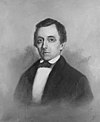
Daniel Rodney | 8 |
|---|
Elected in 1827 to finish Van Dyke's term.
Retired. | January 12, 1827 –
March 3, 1829 | Jacksonian | 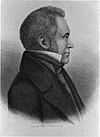
Henry M. Ridgely | 9 |
|---|
| 7 | 
Louis McLane | Jacksonian | March 4, 1827 –
April 16, 1829 | Elected in 1827.
Resigned to become U.S. Envoy Extraordinary and Minister Plenipotentiary to England. | 8 | 20th |
|---|
| 21st | 8 | Elected in 1829. | March 4, 1829 –
December 29, 1836 | Anti-Jacksonian | 
John M. Clayton | 10 |
|---|
| Vacant | April 16, 1829 –
January 7, 1830 | |
| 8 | 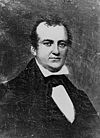
Arnold S. Naudain | Anti-Jacksonian | January 7, 1830 –
June 16, 1836 | Elected in 1830 to finish McLane's term. |
|---|
| 22nd |
Re-elected in 1832.
Resigned. | 9 | 23rd |
| 24th | 9 | Re-elected in 1835.
Resigned. |
| 9 | 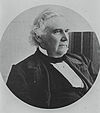
Richard H. Bayard | Anti-Jacksonian | June 17, 1836 –
September 19, 1839 | Elected in 1836 to finish Naudain's term. |
|---|
| | December 29, 1836 –
January 9, 1837 | Vacant |
| Elected in 1837 to finish his cousin's term. | January 9, 1837 –
March 3, 1847 | Anti-Jacksonian | 
Thomas Clayton | 11 |
|---|
| Whig | 25th | Whig |
Re-elected during the 1838/39 cycle.
Resigned to become Chief Justice of Delaware. | 10 | 26th |
| Vacant | September 19, 1839 –
January 11, 1841 | |

Richard H. Bayard | Whig | January 12, 1841 –
March 3, 1845 | Elected in 1841 to finish his own term.
Retired. |
| 27th | 10 | Re-elected in 1841. |
| 28th |
| 10 | 
John M. Clayton | Whig | March 4, 1845 –
February 23, 1849 | Elected in 1845.
Resigned to become U.S. Secretary of State. | 11 | 29th |
|---|
| 30th | 11 | Elected in 1846 or 1847.
Retired. | March 4, 1847 –
March 3, 1853 | Whig | 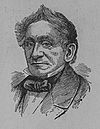
Presley Spruance | 12 |
|---|
| 11 | 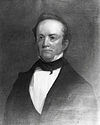
John Wales | Whig | February 23, 1849 –
March 3, 1851 | Elected in 1849 to finish Clayton's term.
Lost re-election. |
|---|
| 31st |
| 12 | 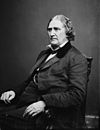
James A. Bayard Jr. | Democratic | March 4, 1851 –
January 29, 1864 | Elected in 1851. | 12 | 32nd |
|---|
| 33rd | 12 | Elected in 1853.
Died. | March 4, 1853 –
November 9, 1856 | Whig | 
John M. Clayton | 13 |
|---|
| 34th |
| | November 9, 1856 –
November 19, 1856 | Vacant |
Appointed to continue Clayton's term.
Declined nomination to finish Clayton's term. | November 19, 1856 –
January 14, 1857 | Whig | 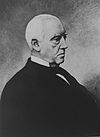
Joseph P. Comegys | 14 |
|---|
Elected in 1857 to finish Clayton's term.
Lost re-election. | January 14, 1857 –
March 3, 1859 | Democratic | 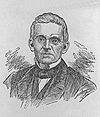
Martin W. Bates | 15 |
|---|
| Re-elected in 1857. | 13 | 35th |
| 36th | 13 | Elected in 1858. | March 4, 1859 –
March 3, 1871 | Democratic | 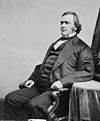
Willard Saulsbury, Sr. | 16 |
|---|
| 37th |
Re-elected in 1863.
Resigned. | 14 | 38th |
| 13 | 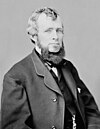
George R. Riddle | Democratic | January 29, 1864 –
March 29, 1867 | Elected in 1864 to finish Bayard's term.
Died. |
|---|
| 39th | 14 | Re-elected in 1864.
Lost re-election. |
| 40th |
| Vacant | March 29, 1867 –
April 5, 1867 | |
| 14 | 
James A. Bayard Jr. | Democratic | April 5, 1867 –
March 3, 1869 | Appointed to continue Riddle's term.
Elected January 19, 1869 to finish Riddle's term. [4]
Retired. |
|---|
| 15 | 
Thomas F. Bayard | Democratic | March 4, 1869 –
March 6, 1885 | Elected in 1869. | 15 | 41st |
|---|
| 42nd | 15 | Elected in 1870. | March 4, 1871 –
March 3, 1889 | Democratic | 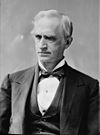
Eli M. Saulsbury | 17 |
|---|
| 43rd |
| Re-elected in 1875. | 16 | 44th |
| 45th | 16 | Re-elected in 1876. |
| 46th |
Re-elected in 1881.
Resigned to become U.S. Secretary of State. | 17 | 47th |
| 48th | 17 | Re-elected in 1883.
Lost re-election. |
| 49th |
| Vacant | March 6, 1885 –
March 18, 1885 | |
| 16 | 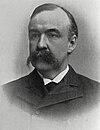
George Gray | Democratic | March 18, 1885 –
March 3, 1899 | Elected in 1885 to finish Bayard's term. |
|---|
| Re-elected in 1887. | 18 | 50th |
| 51st | 18 | Election year unknown.
Lost re-election. | March 4, 1889 –
March 3, 1895 | Republican | 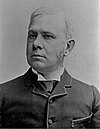
Anthony C. Higgins | 18 |
|---|
| 52nd |
Re-elected in 1893.
Lost re-election. | 19 | 53rd |
| 54th | 19 | Legislature failed to elect in 1895 | March 4, 1895 –
January 19, 1897 | Vacant |
Elected in 1897 to finish vacant term.
Lost re-election. | January 19, 1897 –
March 3, 1901 | Democratic | 
Richard R. Kenney | 19 |
|---|
| 55th |
| Vacant | March 4, 1899 –
March 1, 1903 | Legislature failed to elect | 20 | 56th |
| 57th | 20 | Legislature failed to elect in 1901 | March 4, 1901 –
March 2, 1903 | Vacant |
| 17 | 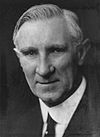
L. Heisler Ball | Republican | March 2, 1903 –
March 3, 1905 | Elected in 1903 to finish vacant term. | Elected in 1903 to finish vacant term.
Retired. | March 2, 1903 –
March 3, 1907 | Republican | 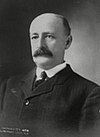
J. Frank Allee | 20 |
|---|
| 58th |
| Vacant | March 4, 1905 –
June 12, 1906 | Legislature failed to elect. | 21 | 59th |
| 18 | 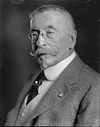
Henry A. du Pont | Republican | June 13, 1906 –
March 3, 1917 | Elected in 1906 to finish vacant term. |
|---|
| 60th | 21 | Elected January 16, 1907. [5]
Retired. | March 4, 1907 –
March 3, 1913 | Republican | 
Harry A. Richardson | 21 |
|---|
| 61st |
Re-elected January 25, 1911.
Lost re-election. | 22 | 62nd |
| 63rd | 22 | Elected January 29, 1913.
Lost re-election. | March 4, 1913 –
March 3, 1919 | Democratic | 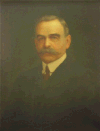
Willard Saulsbury Jr. | 22 |
|---|
| 64th |
| 19 | 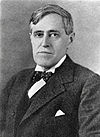
Josiah O. Wolcott | Democratic | March 4, 1917 –
July 2, 1921 | Elected in 1916.
Resigned to become Chancellor of Delaware. | 23 | 65th |
|---|
| 66th | 23 | Elected in 1918.
Lost renomination. | March 4, 1919 –
March 3, 1925 | Republican | 
L. Heisler Ball | 23 |
|---|
| 67th |
| 20 | 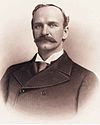
T. Coleman du Pont | Republican | July 7, 1921 –
November 6, 1922 | Appointed to finish Wolcott's term.
Lost election to finish Wolcott's term. |
|---|
| 21 | 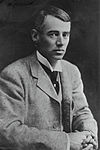
Thomas F. Bayard Jr. | Democratic | November 7, 1922 –
March 3, 1929 | Elected in 1922 to finish Wolcott's term. |
|---|
Elected in 1922.
Lost re-election. | 24 | 68th |
| 69th | 24 | Elected in 1924.
Resigned. | March 4, 1925 –
December 8, 1928 | Republican | 
T. Coleman du Pont | 24 |
|---|
| 70th |
| | December 8, 1928 –
December 10, 1928 | Vacant |
| Appointed to finish du Pont's term. | December 10, 1928 –
January 3, 1937 | Republican | 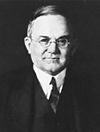
Daniel O. Hastings | 25 |
|---|
| 22 | 
John G. Townsend Jr. | Republican | March 4, 1929 –
January 3, 1941 | Elected in 1928. | 25 | 71st |
|---|
| 72nd | 25 | Elected in 1930.
Lost re-election. |
| 73rd |
Re-elected in 1934.
Lost re-election. | 26 | 74th |
| 75th | 26 | Elected in 1936.
Lost renomination. | January 3, 1937 –
January 3, 1943 | Democratic | 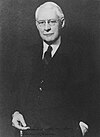
James H. Hughes | 26 |
|---|
| 76th |
| 23 | 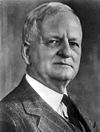
James M. Tunnell | Democratic | January 3, 1941 –
January 3, 1947 | Elected in 1940.
Lost re-election. | 27 | 77th |
|---|
| 78th | 27 | Elected in 1942.
Lost re-election. | January 3, 1943 –
January 3, 1949 | Republican | 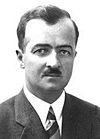
C. Douglass Buck | 27 |
|---|
| 79th |
| 24 | 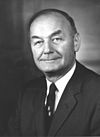
John J. Williams | Republican | January 3, 1947 –
December 31, 1970 | Elected in 1946. | 28 | 80th |
|---|
| 81st | 28 | Elected in 1948. | January 3, 1949 –
January 3, 1961 | Democratic | 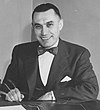
J. Allen Frear Jr. | 28 |
|---|
| 82nd |
| Re-elected in 1952. | 29 | 83rd |
| 84th | 29 | Re-elected in 1954.
Lost re-election. |
| 85th |
| Re-elected in 1958. | 30 | 86th |
| 87th | 30 | Elected in 1960. | January 3, 1961 –
January 3, 1973 | Republican | 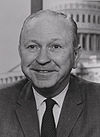
J. Caleb Boggs | 29 |
|---|
| 88th |
Re-elected in 1964.
Resigned to give his successor preferential seniority. | 31 | 89th |
| 90th | 31 | Re-elected in 1966.
Lost re-election. |
| 91st |
| 25 | 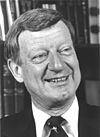
William Roth | Republican | January 1, 1971 –
January 3, 2001 | Appointed to finish Williams's term, having been elected to the next term. |
|---|
| Elected in 1970. | 32 | 92nd |
| 93rd | 32 | Elected in 1972. | January 3, 1973 –
January 15, 2009 | Democratic | 
Joe Biden | 30 |
|---|
| 94th |
| Re-elected in 1976. | 33 | 95th |
| 96th | 33 | Re-elected in 1978. |
| 97th |
| Re-elected in 1982. | 34 | 98th |
| 99th | 34 | Re-elected in 1984. |
| 100th |
| Re-elected in 1988. | 35 | 101st |
| 102nd | 35 | Re-elected in 1990. |
| 103rd |
Re-elected in 1994.
Lost re-election. | 36 | 104th |
| 105th | 36 | Re-elected in 1996. |
| 106th |
| 26 | 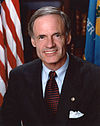
Tom Carper | Democratic | January 3, 2001 –
Present | Elected in 2000. | 37 | 107th |
|---|
| 108th | 37 | Re-elected in 2002. |
| 109th |
| Re-elected in 2006. | 38 | 110th |
| 111th | 38 | Re-elected in 2008.
Resigned to become Vice President of the United States. |
Appointed to continue Biden's term.
Retired when his successor was elected. | January 15, 2009 [6] –
November 15, 2010 | Democratic | 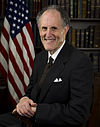
Ted Kaufman | 31 |
|---|
| Elected in 2010 to finish Biden's term. | November 15, 2010 –
Present | Democratic | 
Chris Coons | 32 |
|---|
| 112th |
| Re-elected in 2012. | 39 | 113th |
| 114th | 39 | Re-elected in 2014. |
| 115th |
| Re-elected in 2018. | 40 | 116th |
| 117th | 40 | To be determined in the 2020 election. |
| 118th |
| To be determined in the 2024 election. | 41 | 119th |
| # | Senator | Party | Years in office | Electoral history | T
e
r
m | | T
e
r
m | Electoral history | Years in office | Party | Senator | # |
|---|
| Class 1 | Class 2 |
|---|




